《《对位艺术》 GIOSEEO ZARLINO 德版》
| 作者 | 编者 |
|---|---|
| 出版 | 未查询到或未知 |
| 参考页数 | 160 |
| 出版时间 | 1976(求助前请核对) 目录预览 |
| ISBN号 | 无 — 求助条款 |
| PDF编号 | 816728098(仅供预览,未存储实际文件) |
| 求助格式 | 扫描PDF(若分多册发行,每次仅能受理1册) |
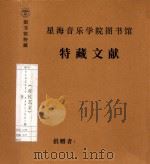
Introduction3
Chapter 1.What counterpoint is and why it is so called11
Chapter 2.The invention of clefs and written notes13
Chapter 3.The elements that make up counterpoint:the intervals15
Chapter 4.Division of the species discussed17
Chapter 5.Whether the fourth is a consonance;and how it happens that musiciand have not used it except in compositions for several voices18
Chapter 6.The division of the consonances imto perfect and imperfect19
Chapter 7.The fourth and the fifth are between the perfect and imperfect consonances20
Chapter 8.Which consonances are“fuller”and which more pleasing21
Chapter 9.The differences found among the imperfect consonances22
Chapter 10.The property or nature of the imperfct consonances22
Chapter 11.Special discussion of the unison23
Chapter 12.The first consonance:the diapason of octave24
Chapter 13.The diapente or fifth25
Chapter 14.The diatessaron or fourth27
Chapter 15.The ditone or major third27
Chapter 16.The semiditone or minor third28
Chapter 17.The musical value of the dissonant intervals28
Chapter 18.The large and small whole tones29
Chapter 19.The large and small semitones29
Chapter 20.The large hexachord or major sixth31
Chapter 21.The small hexachord or minor sixth32
Chapter 22.The diapente-plus-ditone or major seventh32
Chapter 23.The diapente-plus-semiditone or minor seventh33
Chapter 24.How the augmented and diminished forms of these intervals are used in practice,both naturally and accidentally34
Chapter 25.The effects of the signs ?,?,and?36
Chapter 26.What is required in every composition:first,the subject37
Chapter 27.Compositions must be composed primarily of consonances and only incidentally of dissonances38
Chapter 28.A composition must begin with a perfect consonance39
Chapter 29.Two consonances having the same ratio may not be placed one after the other ascending or descending without an intervening interval41
Chapter 30.When the parts of a composition are in harmonic relation,and how the semidiapente and tritone may be used44
Chapter 31.Considerations about nonharmonic relations in compositions for many voices46
Chapter 32.How two perfect or imperfect consonances of the same ratio may be written consecutively47
Chapter 33.Two or more perfect or imperfect consonances of different ratios may be written consecutively48
Chapter 34.After a perfect consonance it is well to write an imperfect con-sonance,and vice versa48
Chapter 35.The parts of a composition should progress in contrary motion49
Chapter 36.The parts of a composition may ascend or descend together49
Chapter 37.Leaps and widely separated voices should be avoided as much as possible50
Chapter 38.How to progress from one consonance to another51
Chapter 39.How to terminate a composition54
Chapter 40.How to write simple counterpoint,called note-against-note,for two voices54
Chapter 41.The unison and octave should be avoided as much as possible in counterpoint57
Chapter 42.Diminished counterpoinr for two voices:how dissonances may be used58
Chapter 43.The method of writing counterpoints upon a part or diminished subject63
Chapter 44.It is not necessary for the subject and the counterpoint to begin together65
Chapter 45.The parts must be well conceived;and what the singer must observe in performing66
Chapter 46.A part should not remain for long in the low or high register68
Chapter 47.A dissonance or minim rest between two perfect consonances of the same species ascending or descending together does not cancel the effect of consecutive consonances68
Chapter 48.The measure70
Chapter 49.The syncopation72
Chapter 50.The rests73
Chapter 51.Fugues or consequences75
Chapter 52.Imitations,and what they are79
Chapter 53.The cadence:its nature,species,and uses82
Chapter 54.How to evade cadences,and what to observe when the subject skips two or more steps87
Chapter 55.When a passage in one voice of a composition may be repeated and when not88
Chapter 56.Double counterpoints and what they are91
Chapter 57.What the contrapuntist must observe in addition to the rules given,and somelicenses he may take97
Chapter 58.The method of composing for more than two voices,and the names of the parts101
Chapter 59.Three-voice compositions and what must be observed in writ-ing them104
Chapter 60.How the fourth may be used in composing107
Chapter 61.Common rules108
Chapter 62.Various kinds of counterpoint;first the kind called double114
Chapter 63.Various kinds of counterpoint;first the kind called double119
Chapter 64.What must be observed when improvising a third part on two given parts122
Chapter 65.What must be observed in composing for four or more voices125
Chapter 66.Some advice about compositions for more than three voices128
Chapter 67.Tempus,modus,and prolation,and the quantitative organiza-tion of compositions134
Chapter 68.The perfection of note values137
Chapter 69.The imperfection of note values139
Chapter 70.The dot,its species,and its effects140
Chapter 71.The value of these devices to good harmony143
Chapter 72.The common steps,and the characteristics of diatonic,chro-matic,and enharmonic compositions145
Chapter 73.Whether in the last two genera the natural steps may be used simply without the steps peculiar to them147
Chapter 74.There are two styles in music,and the compositions of certain modern composers do not fall into any of the genera mentioned 148
Chapter 75.The diatonic may proceed melodically with the intervals of major or minor third,and this does not change its genus148
Chapter 76.Where no change of melodic style is heard in a composition,there cannot be any change of genus150
Chapter 77.The utility of these two genera,and how they may be used with good effect150
Chapter 78.The reason that chromatic compositions by certain moderns have poor effect152
Chapter 79.What was involved in composing in the genera154
Chapter 80.A rebuttal to the opinions of the chromaticists156
1976《《对位艺术》 GIOSEEO ZARLINO 德版》由于是年代较久的资料都绝版了,几乎不可能购买到实物。如果大家为了学习确实需要,可向博主求助其电子版PDF文件。对合法合规的求助,我会当即受理并将下载地址发送给你。
高度相关资料
-

- 版画艺术 3
- 1964 上海:上海人民美术出版社
-

- 版画艺术 2
- 1980 北京:人民美术出版社
-
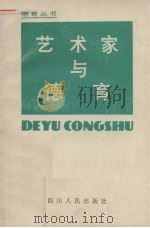
- 艺术家与德育
- 1983 成都:四川人民出版社
-
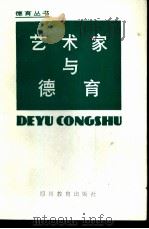
- 艺术家与德育
- 1983 成都:四川教育出版社
-
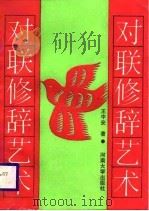
- 对联修辞艺术
- 1988 开封:河南大学出版社
-
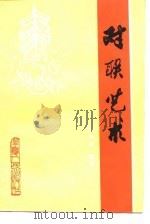
- 对联艺术
- 1983 银川:宁夏人民出版社
-
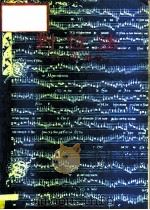
- 对位法
- 1976 天同出版社
-

- 艺术家与德育
- 1987 成都:四川教育出版社
-
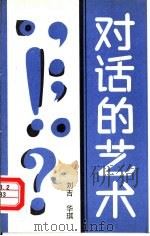
- 对话的艺术
- 1988 北京:解放军出版社
-

- 对位法
- 1950 万叶书店
-

- 对话心理与对话艺术
- 1989 杭州:浙江人民出版社
-
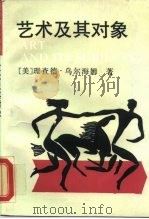
- 艺术及其对象
- 1990 北京:光明日报出版社
-
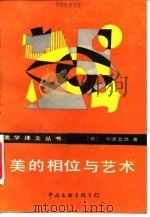
- 美的相位与艺术
- 1988 北京:中国文联出版公司
-

- 文学与艺术八论 互文 对位 文化诠释
- 1994 三民书局股份有限公司
-

- 50位伟大艺术家
- 1981 志文出版社
提示:百度云已更名为百度网盘(百度盘),天翼云盘、微盘下载地址……暂未提供。➥ PDF文字可复制化或转WORD